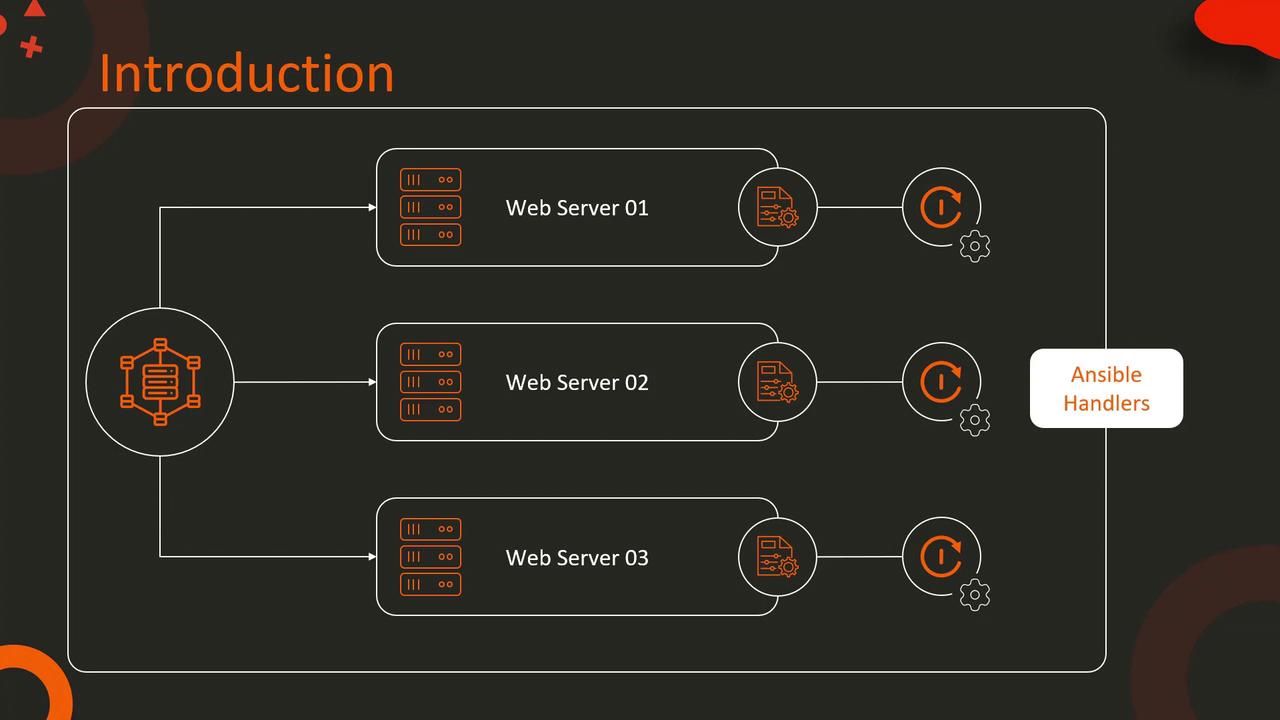Learn Ansible Basics Beginners Course
Ansible Handlers Roles and Collections
Introduction to Handlers
Imagine managing a web server infrastructure with multiple servers. In such environments, simply modifying a web server's configuration file is not enough—the changes only take effect after the service is restarted. As your infrastructure scales, manually restarting services becomes both time-consuming and error-prone.
This is where Ansible handlers become indispensable. Handlers enable you to define specific actions (for example, restarting a web server service) that are automatically triggered when a related task, such as modifying a configuration file, is executed. By creating a reliable link between a configuration change and the required restart action, handlers eliminate the need for manual intervention, streamline operations, and reduce human error.

Whenever a configuration file is updated during a Playbook run, the corresponding handler is automatically triggered. This ensures that your infrastructure management and automation processes are both efficient and resilient.
How Handlers Work
Handlers in Ansible are special tasks that run only when notified by another task. They’re defined within a Playbook and execute actions in response to changes in the system’s state or configuration.

Playbook Example: Deploying an Application with a Handler
The example below demonstrates how to use a handler in an Ansible Playbook. In this scenario, the task "Copy Application Code" deploys the application code to the target servers. Once this task is complete, it notifies the handler "Restart Application Service," which then ensures that the application service is restarted automatically.
- name: Deploy Application
hosts: application_servers
tasks:
- name: Copy Application Code
copy:
src: app_code/
dest: /opt/application/
notify: Restart Application Service
handlers:
- name: Restart Application Service
service:
name: application_service
state: restarted
The handler "Restart Application Service" leverages the service module to ensure that the application service is restarted. This automated approach guarantees that any deployment updates are immediately applied across all target servers without the need for any manual steps.
For further reading on automating server configurations and managing infrastructure efficiently, consider exploring the following resources:
Watch Video
Watch video content